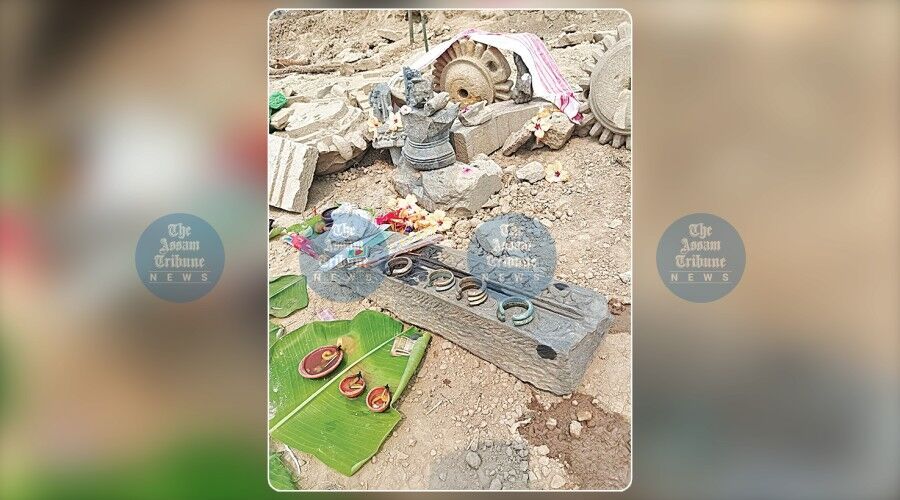
Guwahati, Mar 29: The recent archaeological find in Harlogkuruati village of Nagaon district is believed to be a part of the ancient Doboka kingdom. The chance discovery of a stone temple plinth, multiple 'amalaks', stone fragments, and broken images of deities, stylistically dating back to the 10th-12th century, is being seen as a significant breakthrough. The ruins were unearthed on March 23 during excavations for a mud dam construction along the Kapili River. Meanwhile, local inhabitants reported that a group of children playing near the site discovered gold bangles which are believed to be antiquities.
The directorate of archaeology has apprised the circle officer and district administration of the matter and requested that the antiquities should be collected and placed in the safe custody of the Nagaon treasury office.
The director of the archaeology department, Dr Deepi Rekha Kouli, and her team has submitted a report in this connection to the government as well as the district administration.
"We have requested the district administration to hand over the site to us for protection and preservation. A planned excavation is likely to be carried out in winter," said Dr Chabina Hassan, deputy director of the archaeology department. The region is believed to be part of the ancient 'Kapili valley kingdom', referred to in various sources as 'Dabak' (Doboka), 'Kapili', and 'Tribeg'.
"According to the 4th-century Allahabad pillar inscription of Samudragupta, the Doboka (or Dabak or Davaka) kingdom was one of the frontier kingdoms of the Gupta Empire. Other references are found in the Shung-Shu history of the Liu Song dynasty, where the kingdom is named Kapili (now the name of a river), and the Gachtal stone pillar inscription written in Kamrupi Prakrit. Historian NK Bhattasali has identified it with Dabaka in modern Hojai district and with the kingdom associated with the Kapili-Kolong river valley," said journalist Dipankar Phukan, who hails from the area.
Phukan said that a closer examination of the construction method of the remains of the temple and determining the age of the stone structures will reveal the real facts.
According to the 'Rajamala', a chronicle of the Tripura kings, Tripura king Prataradan had established a kingdom named 'Tribeg' in the Kapili valley around 1900 BC. Archaeologist Rajmohan Nath interprets 'Tribeg' or "Trisrot' as the confluence of three rivers – Kolong, Kapili, and Jamuna.
Historians agree that 'Dabak' and the 'Kapili kingdom' were different names for the same entity.
Ruins of temples in nearby areas, dating from the 5th to the 12th centuries, indicate that the Kapili-Jamuna valley was a centre of Shaiva and Shakti cults, with the Bhouma or Pala kings being the patrons.
By
Rituraj Borthakur